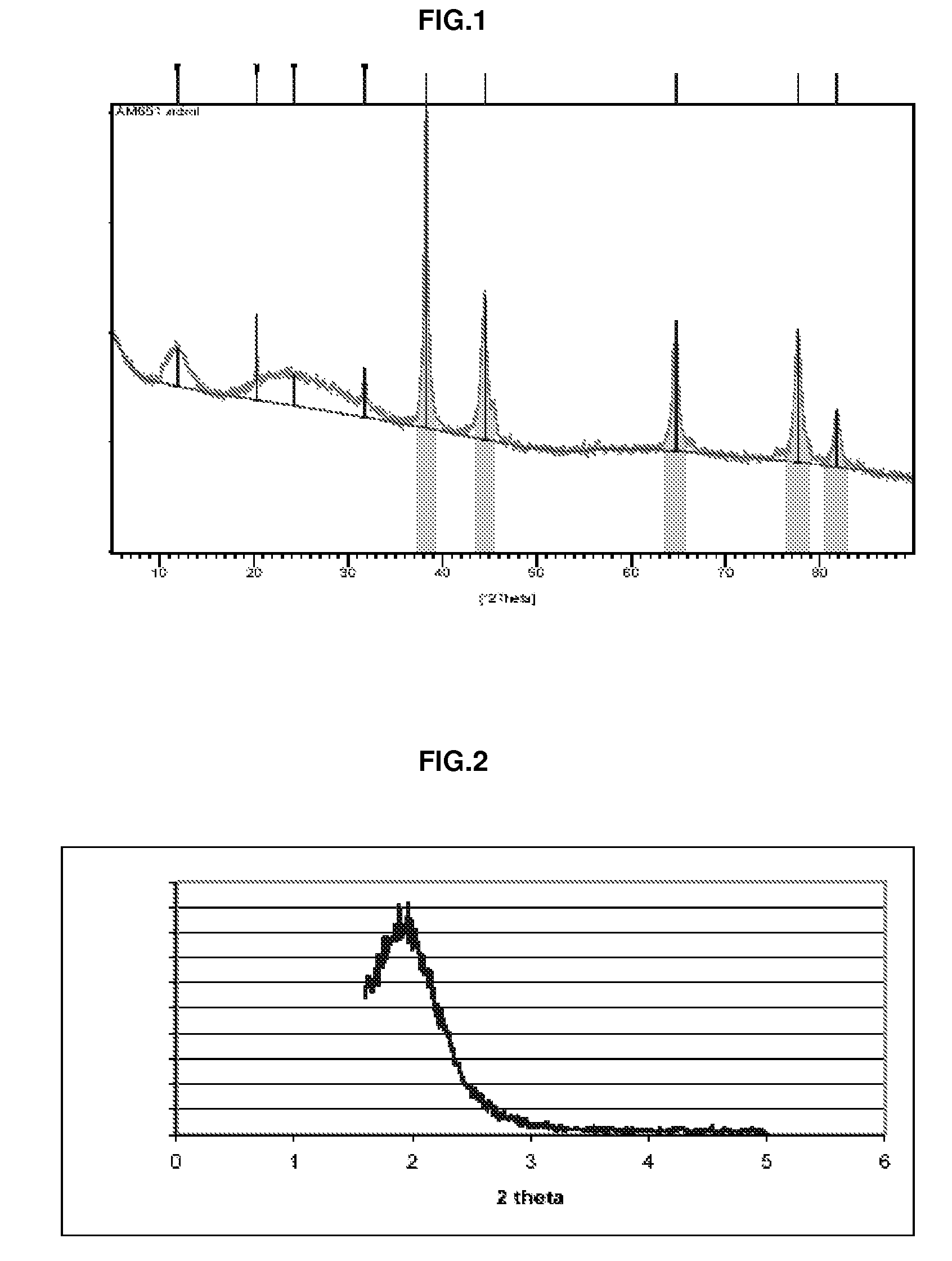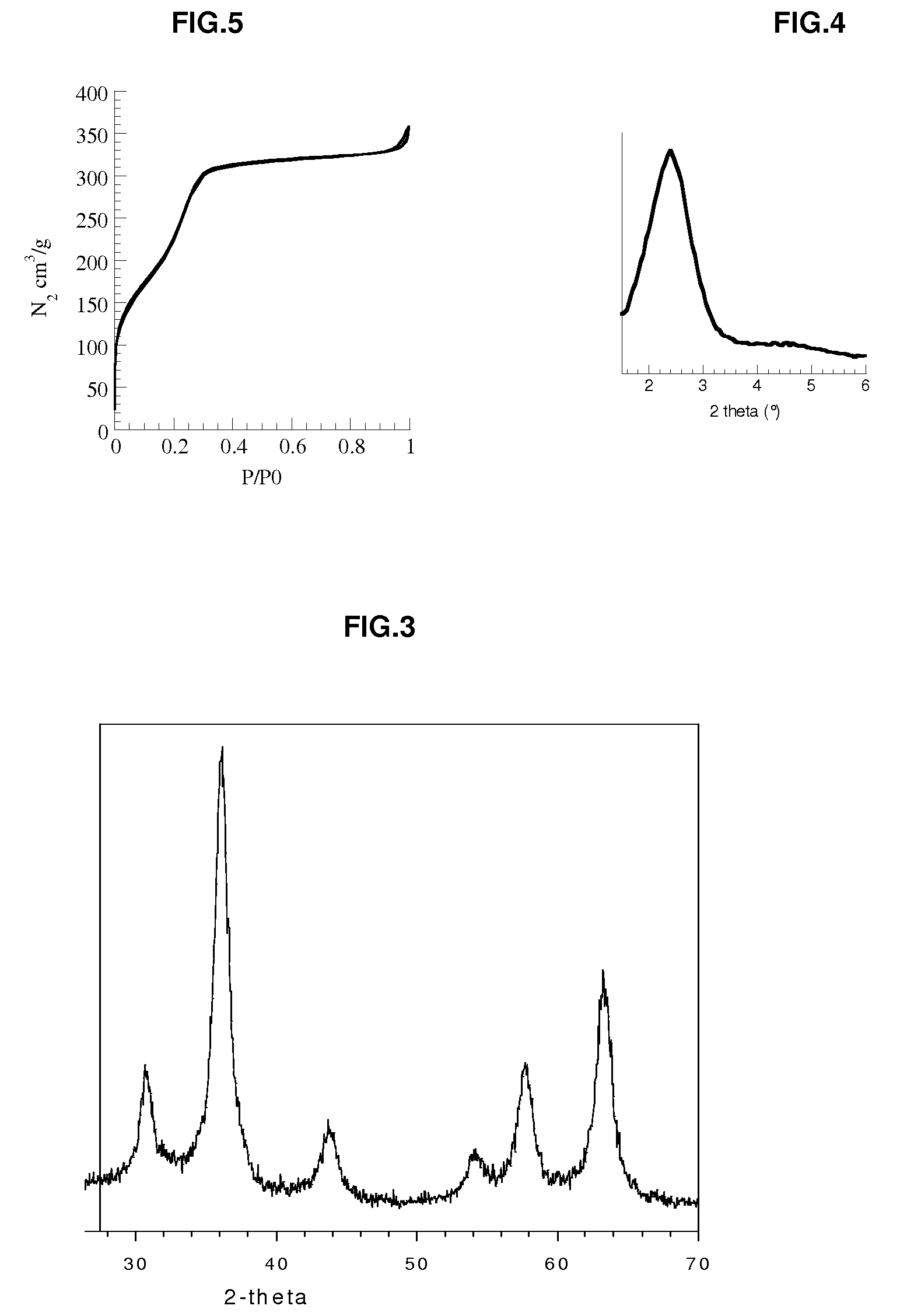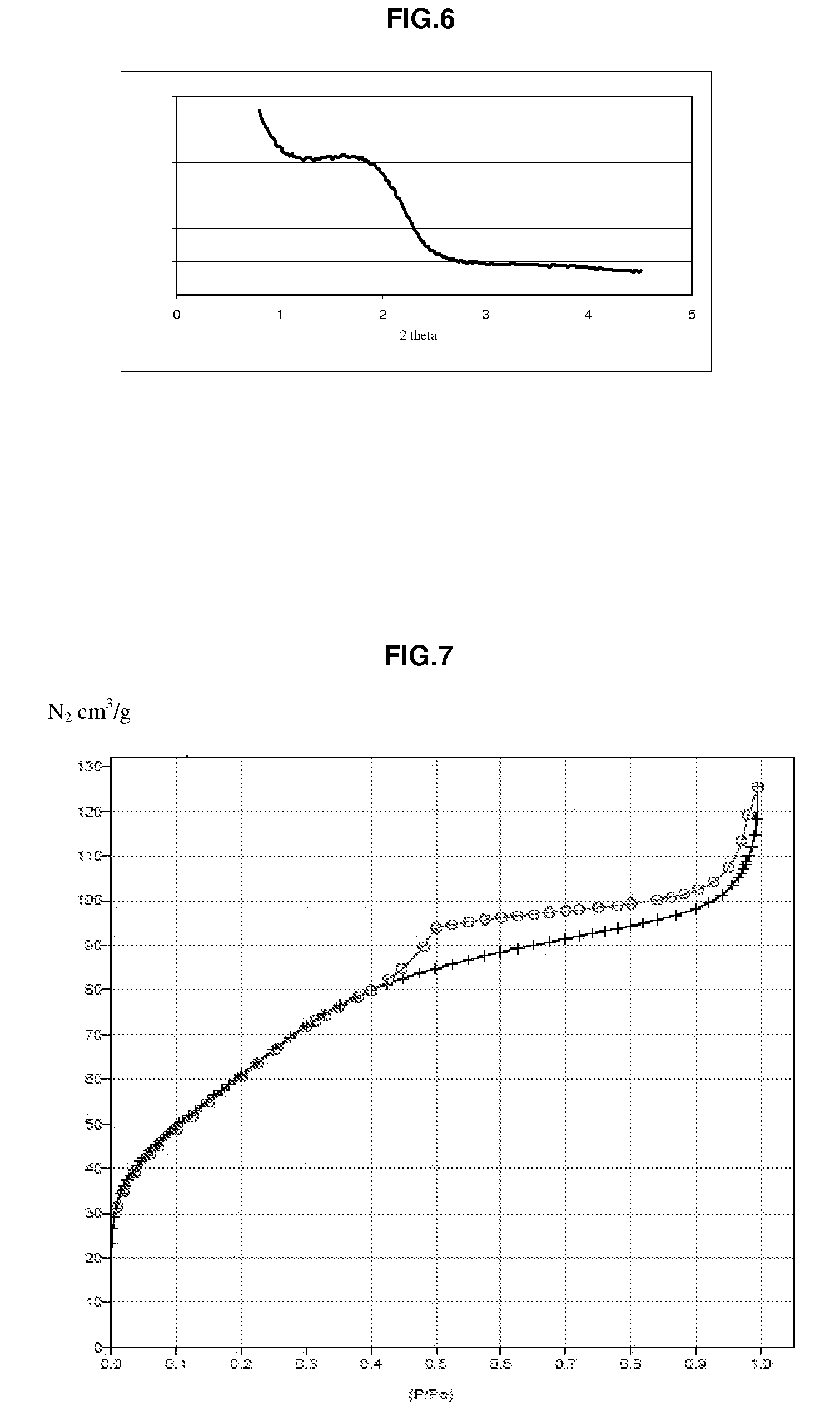Inorganic material that has metal nanoparticles that are trapped in a mesostructured matrix
a mesostructured matrix and metal nanoparticle technology, applied in the field of inorganic materials, can solve the problems of partial, even total, obstruction of the porosity of the mesostructured matrix, and cannot be simultaneously benefiting from the textural and/or structural properties of the mesostructure and metal, and achieve the effect of better diffusion of reagents
- Summary
- Abstract
- Description
- Claims
- Application Information
AI Technical Summary
Benefits of technology
Problems solved by technology
Method used
Image
Examples
example 1
Preparation of a Material that has Gold Metal Nanoparticles with 3% by Weight of the Final Material Trapped in a Mesostructured Matrix of Titanium Oxide TiO2.
[0054]50 mg of AuNaCl4, 2H2O is added to 500 ml of H2O. The solution is brought to a boil in a water bath. 10 mg of the aqueous solution that contains 0.5 g of Na3 (C6H8O7) is then added. All of the solution is allowed to boil until it turns the color red. Gold nanoparticles of a mean diameter on the order of 20 nm in suspension are then obtained (J. Turkevitch, P. C. Stevenson, J. Hillier, Discuss. Faraday Soc., 1951, 11, 55). The solution is then concentrated by evaporation until a solution of the concentration 0.014 mol / l is obtained.
[0055]0.41 g of CTAB is dissolved in 23 g of ethanol at ambient temperature. 0.87 g of TiCl4 is added to this solution while being stirred vigorously. After 5 ml of the gold nanoparticle solution is added, the solution is passed through ultrasound for about one minute. 2.2 g of H2O is then added...
example 2
Preparation of a Material that has Iron Oxide Nanoparticles with 10% by Weight of the Final Material Trapped in an Oxide Mesostructured Matrix with an Aluminum and Silicon Base of a Molar Ratio Si / Al=4
[0056]80 ml of an FeCl3 solution of concentration 1 mol / l and 20 ml of a solution of FeCl2 at a concentration of 2 mol / l of FeCl2 and 1 mol / l of HCl are prepared. These two solutions are mixed and stirred for about 10 minutes. With a titrimeter, the synthesis of the iron oxide particles is carried out by precipitation of the iron solution in 500 ml of an NaNO3 solution at 3 mol / l. During the synthesis, the pH is kept at a value of 11 by simultaneous addition of a soda solution with a concentration of 0.1 mol / l. The solid particles are separated from the supernatant by magnetization. The particles are then redispersed in an aqueous solution of HClO4 at 3 mol / l and left for 30 minutes while being stirred so as to carry out the oxidation of the residual Fe(II). The particles are then sepa...
example 3
Preparation of a Material that has Cerium Oxide Nanoparticles at 10% by Weight of the Final Material Trapped in an Oxide Mesostructured Matrix with a Zirconium and Silicon Base of Molar Ratio Si / Zr=4
[0058]The particles of cerium oxide CeO2 are provided in the form of aqueous solution with 60% by mass of cerium oxide by the Rhodia Company. The particles have a mean diameter on the order of 2 to 3 nm. 12.49 g of this commercial solution is then added to 150 ml of H2O. Then, a solution with a theoretical concentration of 0.29 mol / l of Ce4+ is obtained. 2.2 g of ZrCl4 is then slowly added to 65 g of ethanol at ambient temperature. 34 g of H2O is then added very slowly and while being stirred vigorously. 3.08 g of CTAB and then, still very slowly, 7.8 g of tetraethyl orthosilicate (TEOS) are then added. 6 ml of the cerium oxide solution with a concentration of 0.29 mol / l is then added to the solution that contains the inorganic precursor ZrCl4 by a so-called “stop-flow” system (or quick-...
PUM
| Property | Measurement | Unit |
|---|---|---|
| diameter | aaaaa | aaaaa |
| thickness | aaaaa | aaaaa |
| thickness | aaaaa | aaaaa |
Abstract
Description
Claims
Application Information
 Login to View More
Login to View More - R&D
- Intellectual Property
- Life Sciences
- Materials
- Tech Scout
- Unparalleled Data Quality
- Higher Quality Content
- 60% Fewer Hallucinations
Browse by: Latest US Patents, China's latest patents, Technical Efficacy Thesaurus, Application Domain, Technology Topic, Popular Technical Reports.
© 2025 PatSnap. All rights reserved.Legal|Privacy policy|Modern Slavery Act Transparency Statement|Sitemap|About US| Contact US: help@patsnap.com



